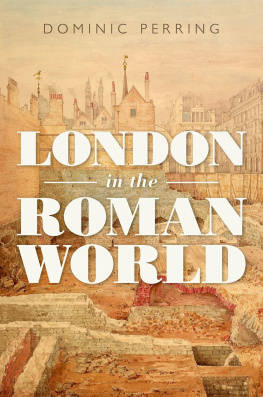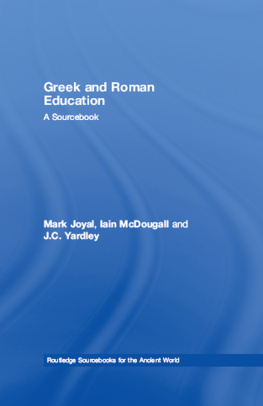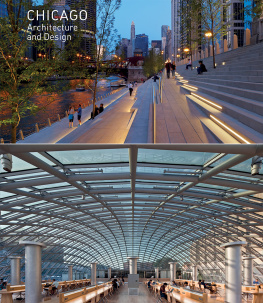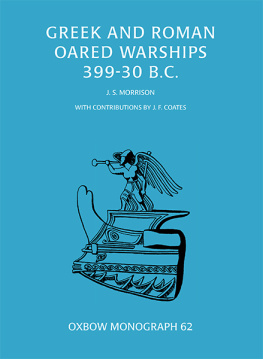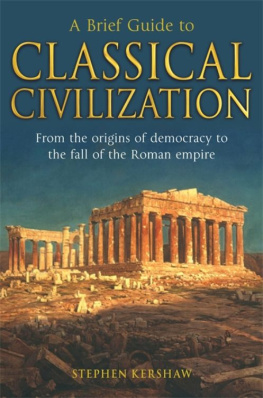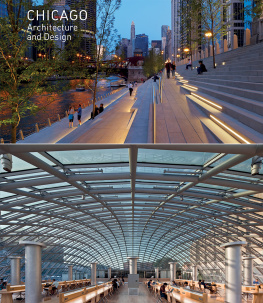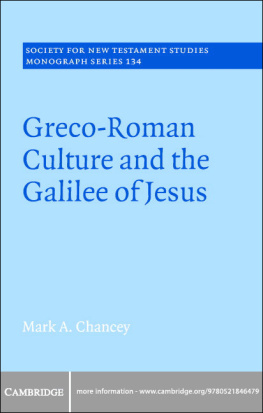The Genesis of Roman Architecture
The Genesis of Roman Architecture
John North Hopkins

Copyright 2016 by John North Hopkins.
All rights reserved.
This book may not be reproduced, in whole or in part, including illustrations, in any form (beyond that copying permitted by Sections 107 and 108 of the U.S. Copyright Law and except by reviewers for the public press), without written permission from the publishers.
yalebooks.com/art
Designed by Leslie Fitch and Lindsey Voskowsky
Set in type Crimson and Source Sans Pro type by Lindsey Voskowsky
Printed in China through Oceanic Graphic International, Inc.
Library of Congress Control Number: 2014957112
ISBN 978-0-300-21181-8
eISBN 978-0-300-21436-9
A catalogue record for this book is available from the British Library.
This paper meets the requirements of ANSI/NISO Z39.481992(Permanence of Paper).
10 9 8 7 6 5 4 3 2 1
Jacket illustrations: (front, from left)
Frontispiece: Statue of Hercules and Minerva from the site of S. Omobono ()
To Ted and Katherine
CONTENTS
ACKNOWLEDGMENTS
While writing this book I have had the privilege of reading studies by some of the greatest art historians, archaeologists, classicists, and humanistsyoung, advanced, and long departed. Their work has been a steady source of inspiration, and their names and contributions can be found in the bibliography. It is a pleasure to mention here those whom I have had the benefit of working with and learning from personally. I have been fortunate to study with John Clarke and Penelope Davies, whose guidance set the foundation for this book. My research and my conception of these monuments, this art, and this wondrous Roman culture have been fundamentally shaped by conversations over fragments of stone and terracottaand over many meals, drinks, and teaswith them and with Nancy Winter, Jim Packer, Nicola Terrenato, Christopher Smith, Albert Ammerman, Patricia Lulof, Nassos Papalexandrou, Ingrid Edlund-Berry, Ili Nagy, Elizabeth Bartman, Anna Mura Sommella, Gabriele Cifani, Seth Bernard, Rachel Kousser, Barbara Borg, Ken Lapatin, Claire Lyons, Lynne Lancaster, Rabun Taylor, Charlotte Potts, Liz Colantoni, Gretchen Meyers, Michael Thomas, Jeffrey Collins, Christina Ferando, Dan McReynolds, Erik Gustafson, Gregory Waldrop, Eleanor Rust, Gregory Bucher, and Andrew Riggsby. I owe these generous scholars a profound debt of thanks. I am also grateful to scholars who have kindly provided me with as-yet-unpublished research or with their personal insights; they have allowed me to refer to them in these pages, and I cite them when I discuss their important finds and conclusions. John Clarke, Michael Maas, Lucy Bradnock, Nicola Terrenato, and Liz Colantoni read drafts either of chapters or the full manuscript, and I am grateful for their feedback, as well as that of the anonymous peer reviewers, whose suggestions truly shaped the final outcome. Of course, any shortcomings in this study rest squarely on my shoulders.
This kind of work would not be possible without the support of several institutions and organizations, which have offered not only great financial help in a parsimonious academic climate, but also heartwarming and mind-opening personal support that has had a real impact on the scholarship here. At the University of Texas at Austin I would like to thank the Department of Art History for their support toward my PhD and toward a Cullen Trust Endowment Fund Continuing Fellowship, which made a years research in Rome possible. A two-year predoctoral fellowship at the American Academy in Rome provided funding and housing for the bulk of my doctoral research, and I must thank Carmela Franklin, Pina Pasquantonio, Anne Coulson, Giulia Barra, and Lexi Eberspacher for all that they did while I was there. Of course the Rome Prize is much more than that, and I am deeply grateful for the many friends, colleagues, and experiences I have gained through such an exceptional institution. The American Council of Learned Societies (ACLS) funded the last year I worked on my dissertation, and I am grateful for the freedom this gave me to work on my conclusions back in Austin. The Getty Research Institute was my home for a year, and I was supported there very generously, not just with funding but also with an incomparable staff, especially Katja Zelljadt, Alexa Sekyra, Sabine Schlosser, Peter Bonfitto, and Rebecca Zamora, who always make a return to Los Angeles a new kind of delight. The ACLS again supported my research and teaching for two years with a New Faculty Fellowship at Rice University, where I was able to discuss the ideas in this volume with new colleagues in the departments of Art History, Classical Studies, and Anthropology. I am truly thankful for this opportunity. I also wish to thank Nancy and Bob Carney for their generosity of spirit and intellectualism. At Rice, I have also had support from the Department of Art Historys Segal Fund and from the office of the Dean of Humanities, Nick Shumway, for travel to Rome and Los Angeles while finishing work on this book. Dean Shumway also provided a generous subvention that allowed for the inclusion of so many images in this volume, and especially so many in color; I will not forget that generosity. None of this would have come to fruition, though, without the help of my editor at Yale University Press, Katherine Boller, who has been an absolute saint throughout the process of bringing this book to press, as have Tamara Schechter, Laura Hensley, and the whole staff.
I would also like to thank the often-unsung heroes of research, the librarians, particularly Shiela Winchester and Laura Schwartz at the University of Texas at Austin; Denise Gavio, Christina Huemer, Rebecka Lindau, Paolo Imperatori, and the staff at the American Academy in Rome; the librarians and staff at the Getty Research Institute, particularly those in Special Collections; and Jet Prendeville and the staff at Fondren Library at Rice University. Special thanks go to two more librarians, Emily Luken and Katherine Hopkins, for their investigations quite outside the line of duty.
I am deeply grateful to Richard Beacham for his generosity in helping me to reconstruct some of the temples discussed in these pages through virtual technology. I also offer my sincere thanks to Janis Atelbauers and Will Wang for their steadfastness in working to rebuild such troublesome works of architecture. Throughout the process of virtual reconstructionwhich some might see as supplementary, but which is in fact absolutely crucial to a research project based in the reimagining of lost monumentsChris Johanson, Diane Favro, Jim Packer, Richard Beacham, Jeff Fleisher, Linda Neagley, Fars el-Dahdah, and Patricia Lulof have been constant companions in the search for a means and a meaning to virtual reconstruction.
The goodwill of many museums and archaeological superintendencies in Italy were essential for this project, both at the research stage and when collecting images of objects in their possession. I would like to thank at the Capitoline Museums and the Sovrintendenza Capitolina ai Beni Culturali: Claudio Parisi-Presicce, Angela Carbonaro, Margherita Albertoni, and Alberto Danti; at the Museo Nazionale Etrusco di Villa Giulia and the Soprintendenza per I beni archeologici dellEtruria Meridionale: Alfonsina Russo, Maria Laura Falsini, and Rita Cosentino; at the Soprintendenza Speciale per i Beni Archeologici di Roma: among others, Maria Daniela Donninelli, Rosanna Friggeri, Roberto Meneghini, Elisabetta Bianchi, and Irene Iacopi; at the Soprintendenza Archeologica di Lazio, Giovanni Caruso; at the Museo di Velletri, dott.ssa Germano; at the Comune di Lanuvio: Luca Attenni and Francesco Graziani; at the Museo di Cerveteri, dott. Fabrizio Paganelli; at the Museo di Tarquinia, Massimo Magrini, who was so patient and helpful; and at Roma Sotterranea, Luca Antognoli. In addition I would like to thank Andrea Giovagnoli, Carla Antonaccio, Erik Gustafson, Bud Skibitzke, Hans Ollermann, Peter Wiseman, and Patricia Lulof for allowing me to reproduce their photographs and drawings here.
Next page


